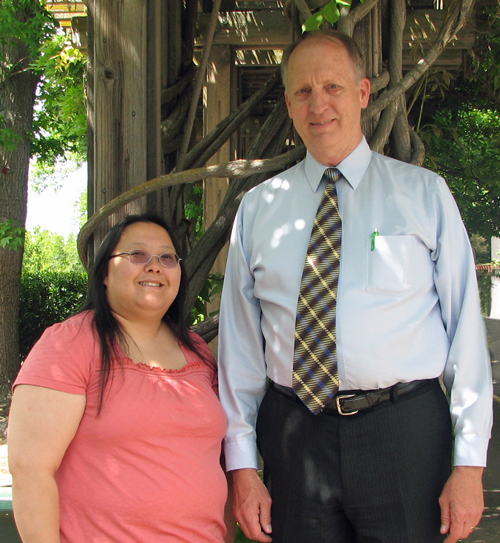BEHIND THE SCENES
 RISK MANAGEMENT
RISK MANAGEMENT
Risk management is a simple concept, but what does it mean when applied in a large and complex institution? Sacramento State’s Risk Management unit is one of five that comprise Risk Management Services (RMS), which also includes Environmental Health & Safety, Space Management, Continuity of Operations Planning, and Worker's Compensation. As a department, RMS is "committed to creating and maintaining a campus environment that is safe for students, staff, faculty and our community neighbors..." This edition of Behind the Scenes will give readers a view into the University's Risk Management Office.
Prevention and preparation are two of Risk Management's top priorities to ensure our 300-acre campus remains hazard free. With just two employees, Kirtland Stout and Janie Xiong, Risk Management manages all 16 University insurance programs. Each of these programs helps insure the University against both possible liability and hazards to the physical campus. For a full organizational chart of Risk Management Services, click here.
One of Risk Management's goals is to get others to "think like risk managers.” This extends their reach to mitigate risks. They accomplish this by getting themselves out there, attending major cross-division meetings, issuing and offering online trainings, and informing faculty, staff, and community neighbors of changes to insurance policies.
A major service of Risk Management includes their Business Continuity Planning, or Continuity of Operations, efforts, which seek to prepare the campus to restore operations and services in the event of an emergency, and be "back in business" as soon as possible. A good example of how this works involves the arsons in Mendocino Hall and Mariposa Hall. Once the fires had been extinguished and the buildings were deemed safe, established plans were implemented to ensure that those facilities would be operable while repairs were underway. Students, faculty and staff need and depend upon these resources, and Risk Management helps to ensure that even in the case of emergency, class schedules are minimally impacted.
A regular day for Risk Management Analyst Janie Xiong includes processing insurance forms, such as foreign travelers insurance; website maintenance, to ensure online information is current and accurate; and special projects, in collaboration with team members Associate Vice President Mike Christensen and Director Kirtland Stout. Work is "a mix of everything," said Janie. "Some days are … go, go, go."
There are some misconceptions about Risk Management. As Janie Xiong puts it, "We aren't the bad guys, we aren't 'zero-risk,' we don't bubble wrap everything." On the contrary, Risk Management personnel are involved in a broad range of proactive efforts to inform the University community of potential hazards, such as those that off-site interns may face, and to promote safe practices, such as defensive driving. They are involved in identifying safety hazards on the campus, and last year implemented an electronic data base that ranks and tracks trip hazards to help Facilities Services plan repairs of walkways and working services. Well over 200 reported trip hazards have been repaired using this system.
Despite their limited staff, Risk Management finds ways to meet their responsibilities of ensuring a risk-aware and risk-averse physical environment on campus. From their quick turnaround time on processed forms, to answering questions on insurance programs and risk assessments, Risk Management is a team of dedicated employees who take pride in their work and enjoy their jobs.


